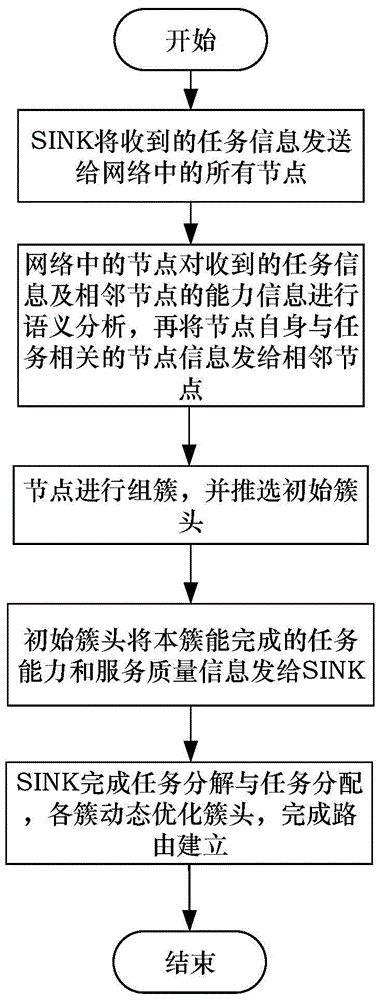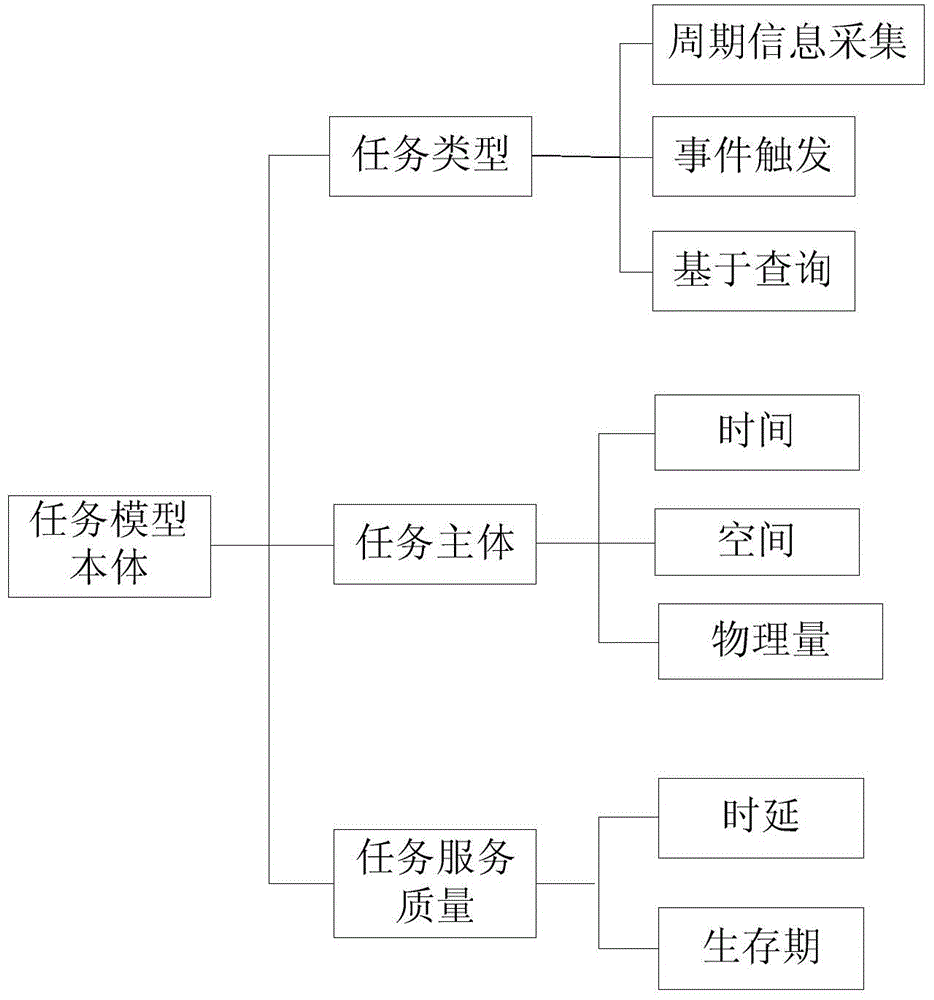Application-Oriented Clustering Routing Method for Wireless Sensor Networks
A wireless sensor, application-oriented technology, applied in the field of communication, can solve problems such as node failure, network can not continue to work, fast energy consumption, etc., to achieve the effect of reducing node energy consumption, enhancing adaptability, and reducing energy consumption
- Summary
- Abstract
- Description
- Claims
- Application Information
AI Technical Summary
Problems solved by technology
Method used
Image
Examples
Embodiment Construction
[0030] The present invention will be further described in detail below in conjunction with the accompanying drawings.
[0031] A wireless sensor network routing method based on semantic task decomposition described in the present invention is suitable for a wireless sensor network with a cluster structure, such as figure 1 shown. The wireless sensor network with cluster structure includes sensor nodes, cluster head nodes, sink nodes and so on. The monitoring data collected by the sensor nodes is sent to the cluster head node of the cluster to which the sensor node belongs. The cluster head node processes and fuses the data of the nodes in the cluster and transmits it to the SINK node, and finally reaches the management node and users through the Internet or satellites. The flow chart of the present invention is as figure 2 As shown, it specifically includes the following steps:
[0032] In the first step, SINK sends the received task information to all nodes in the network...
PUM
 Login to View More
Login to View More Abstract
Description
Claims
Application Information
 Login to View More
Login to View More - R&D
- Intellectual Property
- Life Sciences
- Materials
- Tech Scout
- Unparalleled Data Quality
- Higher Quality Content
- 60% Fewer Hallucinations
Browse by: Latest US Patents, China's latest patents, Technical Efficacy Thesaurus, Application Domain, Technology Topic, Popular Technical Reports.
© 2025 PatSnap. All rights reserved.Legal|Privacy policy|Modern Slavery Act Transparency Statement|Sitemap|About US| Contact US: help@patsnap.com



